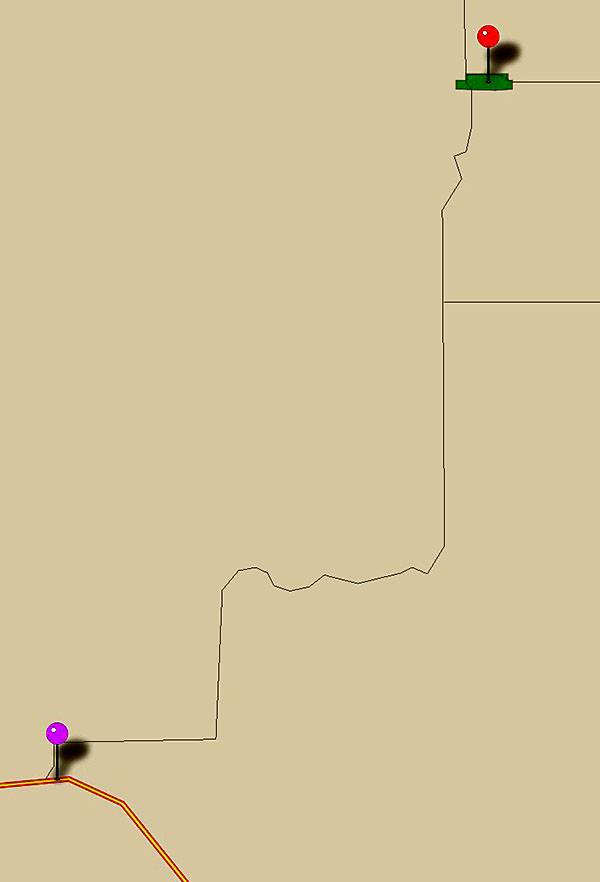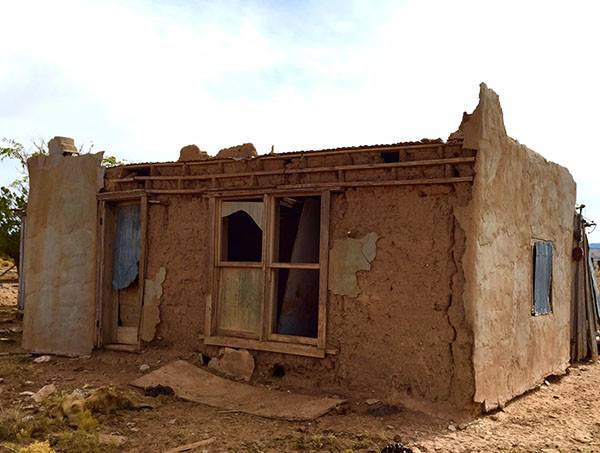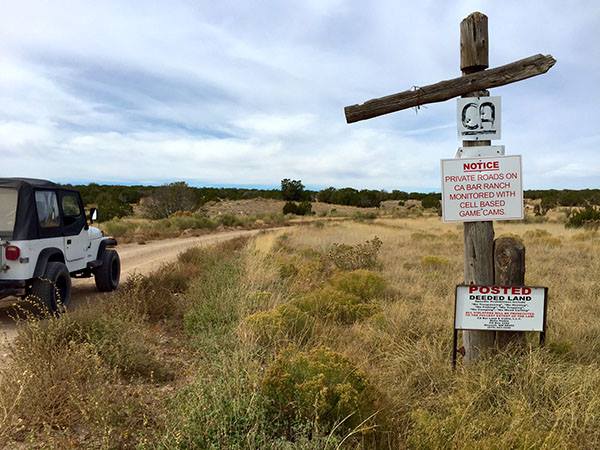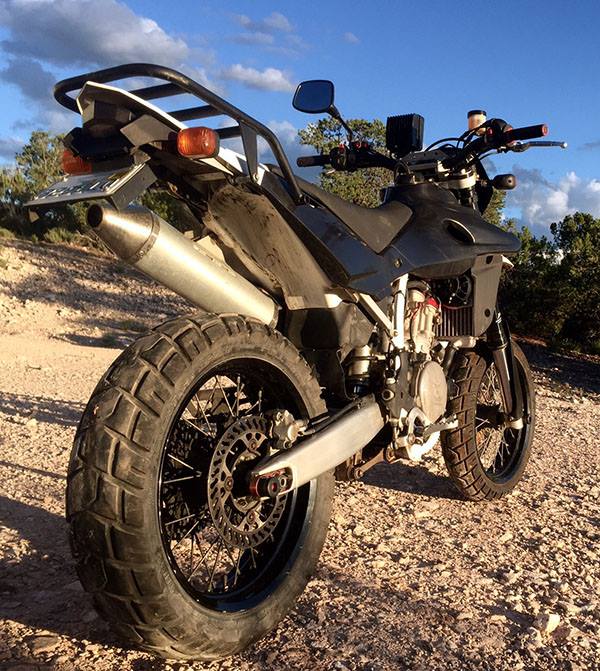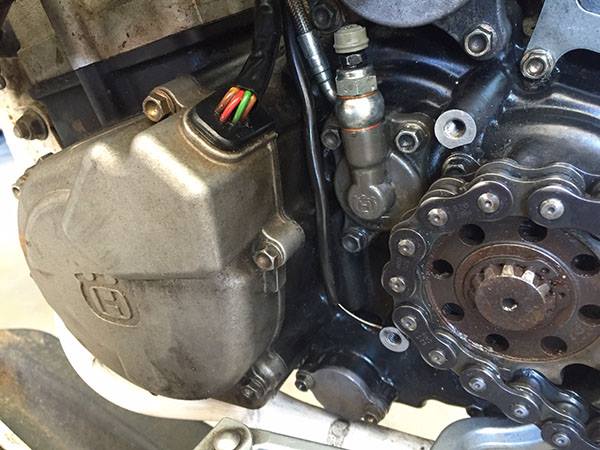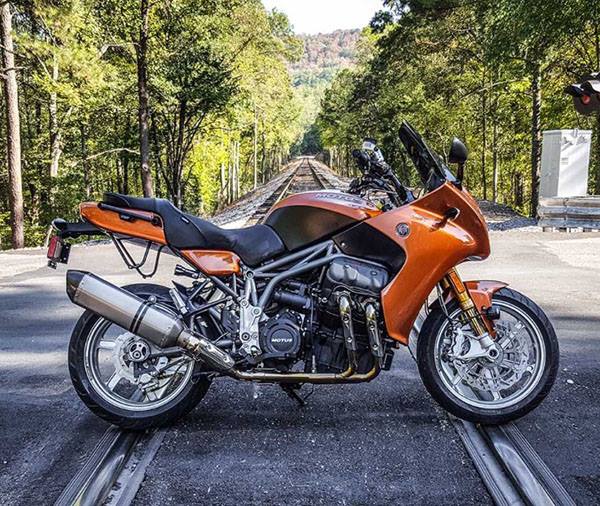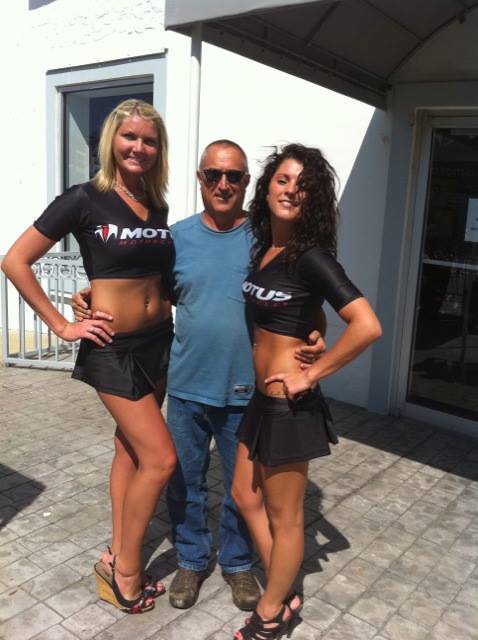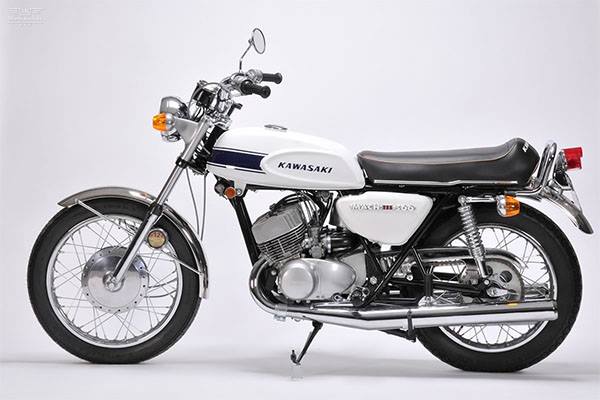
The ’69 Kawasaki Mach III 500cc two-stroke triple: Wow! It was a watershed wunderbike back in the days when the Big Four had serious engineering, the kind that went way beyond Bold New Graphics. They were trying all kinds of mechanically wild and wonderful things then. It was a magnificent time to start a motorcycle riding career.
Nicknamed the Widowmaker for its tendency to wobble and wheelie, the Mach III was the fastest motorcycle of its era, its MSRP was under $1000, and it would whomp a Honda CB750 in a drag race. I know because I was there. I had a Honda 750 and my college compadre Keith had the Kawi triple. I had a 50% displacement advantage and that extra cylinder, but it was to no avail. Keith cleaned my clock at every light.
Good buddy Gobi Gresh is all gaga on these bikes, so I guess that’s what induced my heightened sensitivity to the topic of all things two-stroke triple. Yesterday morning a note arrived in my email from Motorcycle Classics (the gold standard of motorcycle magazines, in my opinion), and it mentioned an article on a Mach III restoration by Anders Carlson. I sent it on to Arjiu knowing his perverted puttster predilections, he told me the story was really good, and I read it. I agree. I’ve never met Mr. Carlson, but let me tell you, the man can write.
Truth be told, I never wanted a Kawasaki Triple back then in any of the four flavors (I believe that as the line grew, they offered a 250, a 350, the original 500, and a 750 version). Now, maybe having one would be cool. I’d be a better man, I think, if I owned one.
I did my first international motorcycle ride ever with good buddy Keith back in the early ’70s. Keith rode his ferociously fast 500 triple and I rode my Honda 4 from central Jersey to Montreal. We were in high spirits, as might be expected. We were two young guys riding our bikes to Canada. Canada! It would almost be like going to another country! We were in engineering school back then, both of us were in Army ROTC, and it was a fun ride. We joked that folks might think we were draft dodgers, heading to Canada and all.
We swapped bikes for a while somewhere in Vermont and I thought the Kawasaki was downright painful. That bike could have been an enhanced interrogation tool before the term was invented. It felt like sitting a two-by-four plank. The 500 triple was fast in a digital sort of way (full on, or full off) and I didn’t care for it. My CB750 was a much more comfortable bike and it sounded the way I thought a motorcycle ought to. You know, like an Offenhauser. The Kawi sounded like a chain saw.
My buddy Peter had one of the Kawasaki 750 triples. I didn’t know him then, but he told me a story about that bike going into a high speed wobble coming down California’s Cajon Pass (the result being one pitched Peter with a broken shoulder that bothers him to this day). “I can’t tell you how many times I ran out of gas on that thing,” was his only other comment. I guess it liked fuel.
Still, the Kawi two-stroke triples are iconic bikes, and the Carlson article I mentioned above is a great read. If I was going to have a Kawi triple, it would be a white one with blue stripes (the original colors), just like Keith’s and the one you see in the photo above.

 Rumors are circulating on the Internet that Kawasaki is finally ceasing production of their KLR650 dual-sport motorcycle. Wild Conjecture has no clue if this is true but uninformed rumors are close enough for us.
Rumors are circulating on the Internet that Kawasaki is finally ceasing production of their KLR650 dual-sport motorcycle. Wild Conjecture has no clue if this is true but uninformed rumors are close enough for us. As a KLR owner I’ll be sad to see the “Killer” letter designation dropped. Given the history of the 650 maybe Kawasaki can use the iconic KLR combination on a rail-transported pipeline trencher or large bulk oil carrier.
As a KLR owner I’ll be sad to see the “Killer” letter designation dropped. Given the history of the 650 maybe Kawasaki can use the iconic KLR combination on a rail-transported pipeline trencher or large bulk oil carrier. My source claims the new 1M-BC will prove it’s woodle by participating in the not-so-demanding Pike’s Peak Downhill Time Trial, a race the bike has a fair chance of winning as no one else is aware of the race and Kawasaki is keeping the event date close to its vest.
My source claims the new 1M-BC will prove it’s woodle by participating in the not-so-demanding Pike’s Peak Downhill Time Trial, a race the bike has a fair chance of winning as no one else is aware of the race and Kawasaki is keeping the event date close to its vest.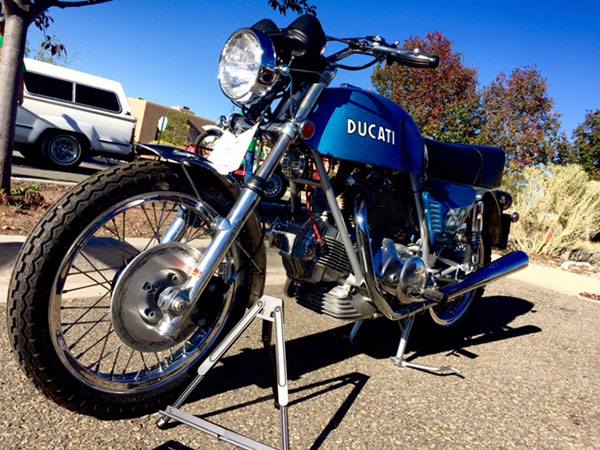
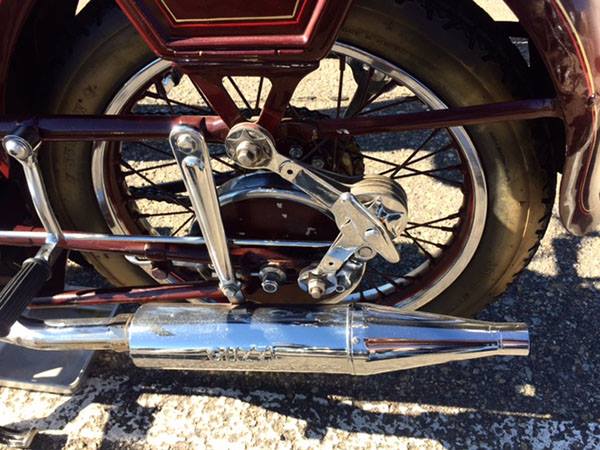
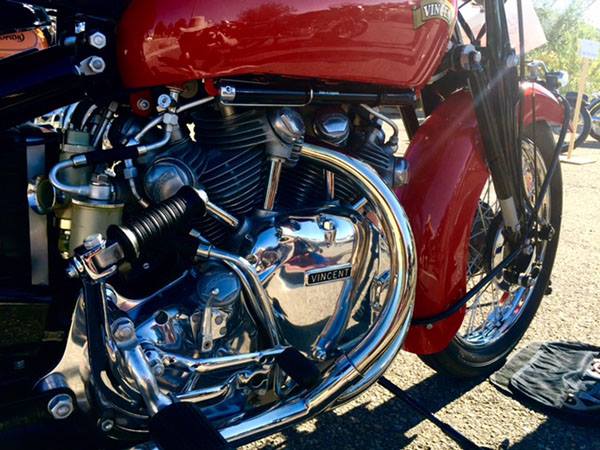
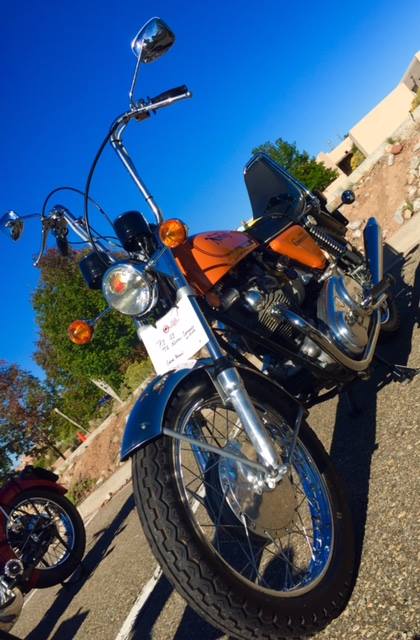
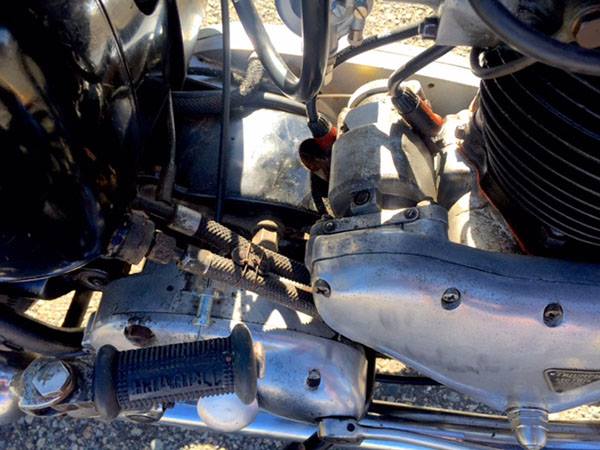
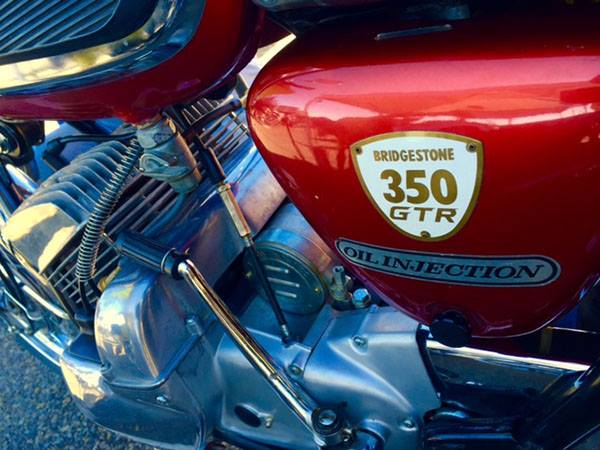 A couple of Ravens utilizing Moto Guzzi engines as they were never intended. The twin-cylinder model is shocking enough but the single with its rear cylinder blanked off takes the prize.
A couple of Ravens utilizing Moto Guzzi engines as they were never intended. The twin-cylinder model is shocking enough but the single with its rear cylinder blanked off takes the prize.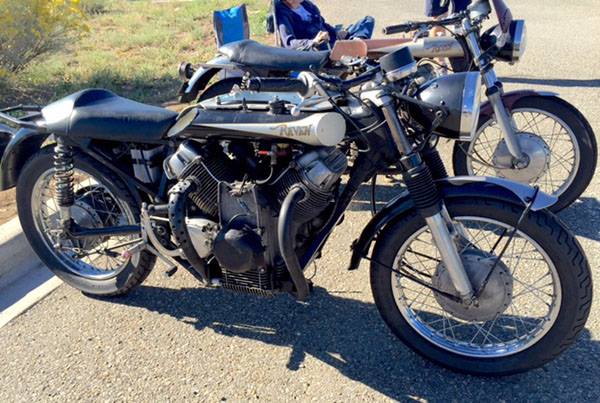
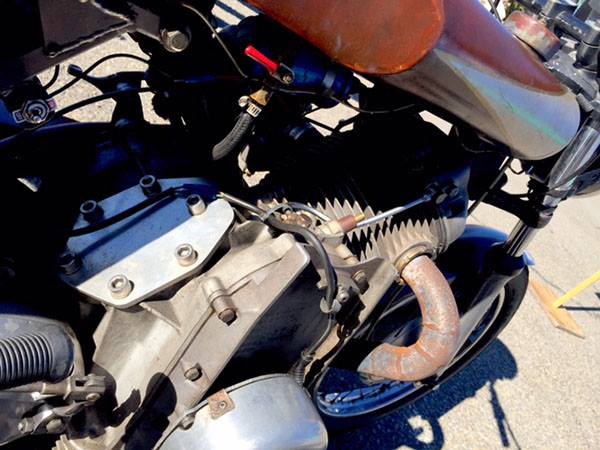
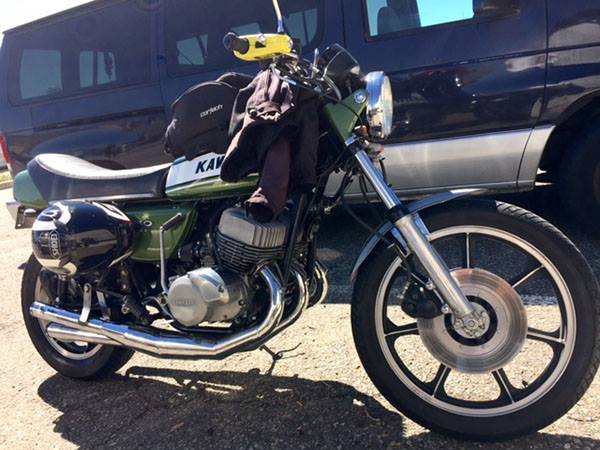 I have about a million more shots from the show but you get the idea. Keep the date open for Motorado 2019 and I’ll see you there, maybe on an old Z1 if I can get the beast going in time.
I have about a million more shots from the show but you get the idea. Keep the date open for Motorado 2019 and I’ll see you there, maybe on an old Z1 if I can get the beast going in time.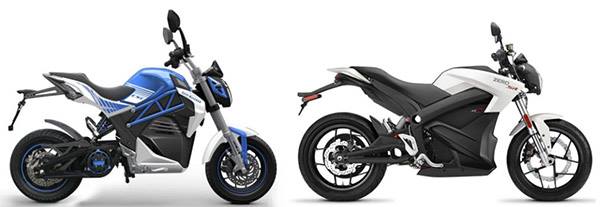

 This photo may or may not be the new Indian FTR1200 that we’ve all been fantasizing about since Indian shoved both H-D and Kawasaki aside and took over flat track racing in America. Posted by Roger Gutterridge and brought to my attention by my internet buddy, Skip Duke, I have no way of knowing if this is the real thing.
This photo may or may not be the new Indian FTR1200 that we’ve all been fantasizing about since Indian shoved both H-D and Kawasaki aside and took over flat track racing in America. Posted by Roger Gutterridge and brought to my attention by my internet buddy, Skip Duke, I have no way of knowing if this is the real thing.



